
Viking Saga: Reimagining the ideal European vacation
In his 76 years, Norwegian billionaire Tor Hagen worked his way from McKinsey consultant to cruise line CEO, got fired, lost millions, survived cancer, then built a titanic business
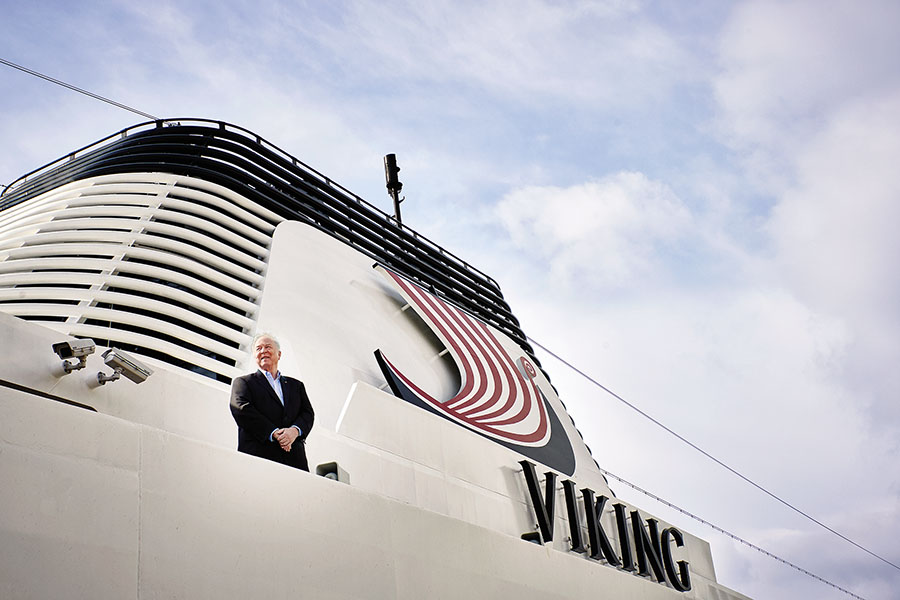 Tor Hagen on the deck of the Viking Jupiter cruise ship as it sails between Ravenna, Italy, and Athens, Greece
Tor Hagen on the deck of the Viking Jupiter cruise ship as it sails between Ravenna, Italy, and Athens, GreeceImage: Jamel Toppin for Forbes
And then, within minutes, Hagen lets on to something else he doesn’t like: Not being in charge. This is what inspired him to start Viking Cruises: He was running an ocean cruise line and putting the final touches on a buyout that would have left him with the chief executive’s job and an ownership stake, when out of the blue another buyer upstaged him and sent him packing. He spent the next ten years trying unsuccessfully to regain control. So, at 54, he created a similar company.
“This was as close as I could come to getting it back,” Hagen says as he settles into his favourite spot on the ship, a leather couch in the first-floor lobby, where you can find him in the evenings with a gin and tonic, listening to live classical music and gazing up at artwork by Edvard Munch.
He got his old glory back and then some. What he has now are 78 ships and 9,000 employees generating $1.6 billion in net revenue. The company is worth $3.4 billion after the most recent private equity injection. He owns three-fourths of it.
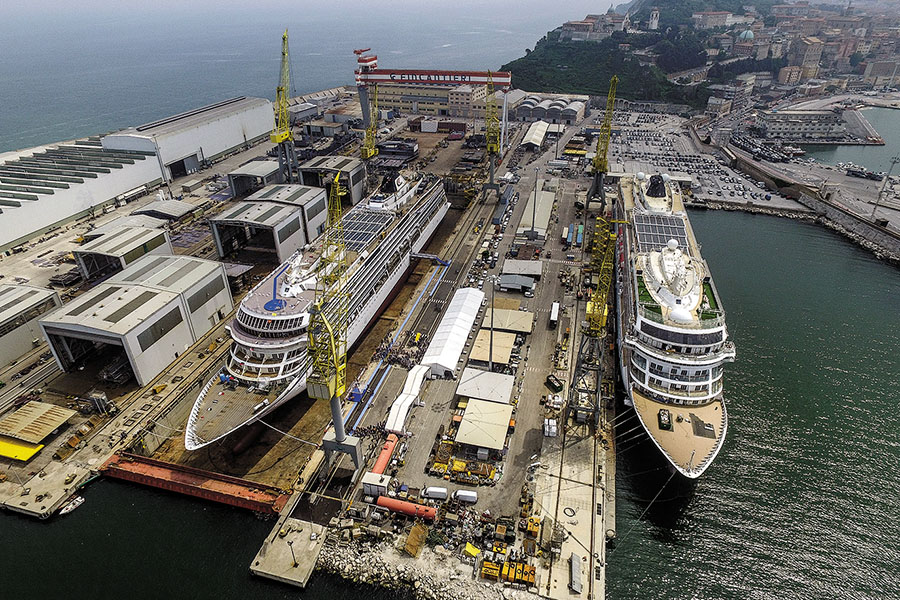 A Viking vessel under construction at a Fincantieri shipyard in Italy
A Viking vessel under construction at a Fincantieri shipyard in ItalyAll these years Hagen has been playing the long game. He watched as the big ocean cruise lines raced to supersize their ships and fill them with rock-climbing walls, go-karts, bowling alleys and multilevel shopping malls so passengers would never have to leave. He took notes and bided his time.
Meanwhile, he bought four small river ships and created the “thinking man’s cruise”, with lectures, opera and cooking demonstrations, while deriding other cruises as the “drinking man’s cruise”. Then he leveraged his brand and passenger base to go big. Since 2015, he has introduced six 930-passenger ocean ships.
“Everybody said you won’t be able to finance the ships, build the ships, crew the ships or fill the ships,” Hagen recalls. Even his family was against the risky and expensive undertaking of moving into ocean voyages. He was motivated to prove them wrong. Last year the 9,000 staterooms in the Viking fleet were 98 percent occupied, with almost half the business coming from ocean ships.
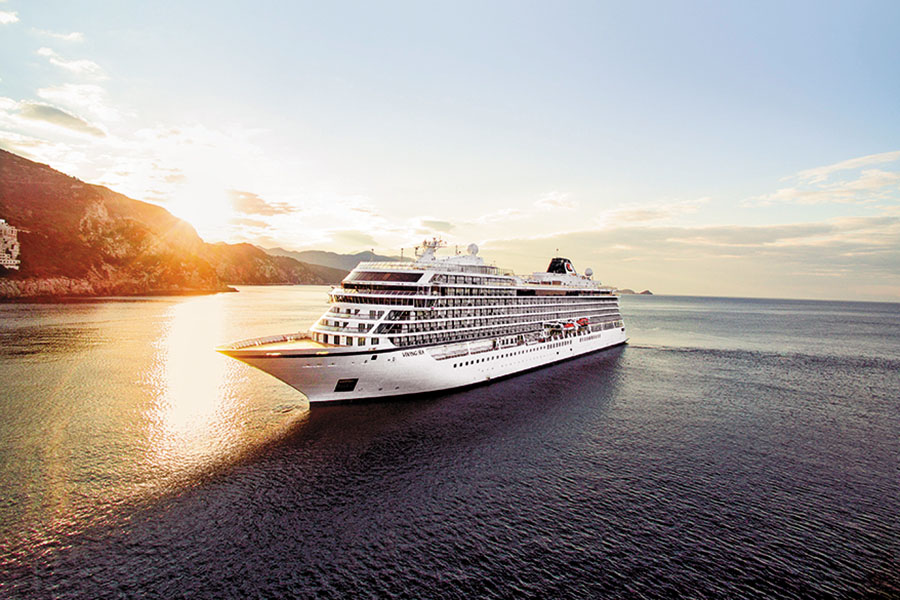 The Viking Sky sails near Dubrovnik, Croatia
The Viking Sky sails near Dubrovnik, CroatiaHagen, 76, caters to a certain crowd: Wealthy, well-educated and over 55. “I can do my market research by looking in the mirror,” he jokes. Whereas you might nab a competitor’s Caribbean cruise for $399 a head, Viking’s cruises start at $1,899 (for seven nights) and often sell out a year in advance. The Viking price includes Wi-Fi, beer and wine with meals, and one shore excursion a day.
Hagen can hardly keep up with the demand. He is borrowing cash furiously (the company’s debt is $2.5 billion) to build more ships and has also raised equity capital from the Canadian pension board and the US private equity firm TPG.
“I must say—perseverance is pretty important,” says Hagen, who started Viking at the same age at which his father died and three years after he was diagnosed with prostate cancer. “We have come far. Nobody would have given us the chance to do what we did when we started.”
Hagen was born in the Oslo suburb of Nittedal, where he lived in a red house and skied to school during winters. His father worked as an accountant, and at 14 Hagen followed in his footsteps and got an accounting job at a woodworking factory. He earned a degree in physics at the Norwegian Institute of Technology and then went to America for his MBA at Harvard.
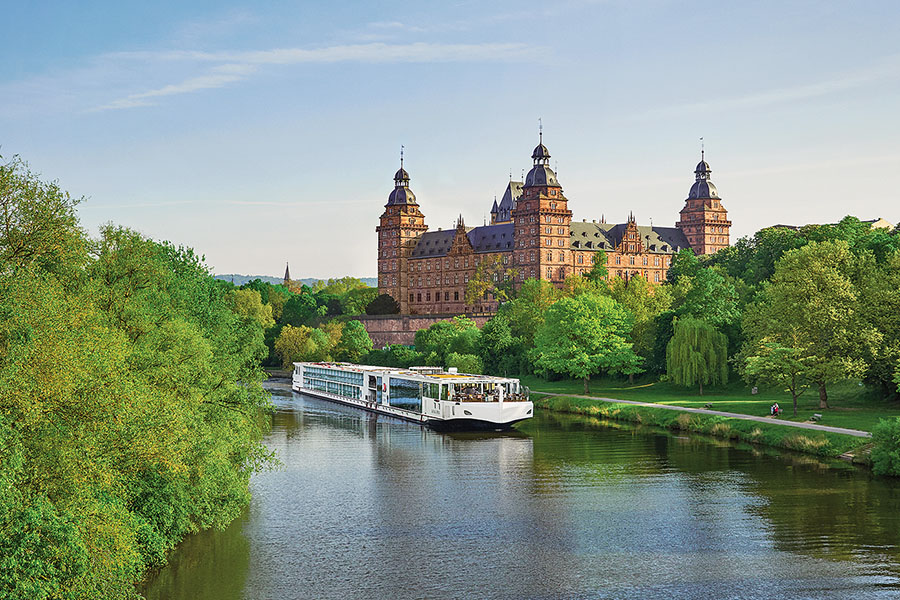 A Viking river ship navigates the Main in Aschaffenburg, Germany
A Viking river ship navigates the Main in Aschaffenburg, Germany“It is one thing to be a consultant. It is another thing to have your hand on the wheel,” Hagen says. At 33, brimming with confidence, he pitched a plan to a struggling Norwegian shipping company called Bergen Line and was hired as its chief executive. He hacked his way to profitability, firing so many workers and selling so many ships that the company’s headquarters shrank from five floors to one.
In 1980, Hagen took over as chief executive of one of the company’s subsidiaries, the Royal Viking Line. His plan there was more cutting but of a different sort: He added a new middle section to the ships to make them longer, bumping passenger count from 525 to 740. That reduced the break-even occupancy from 93 percent to 63 percent.
In 1984 he put together a $240 million management buyout with the help of the private equity firm JH Whitney. The deal was almost final when he heard on television that a competitor, Knut Kloster, had come out of nowhere to purchase the company. Hagen blames a JH Whitney partner for being too busy at the opening ceremony of the 1984 Summer Olympics in Los Angeles to send the last $5 million to the sellers.
Hagen watched as Royal Viking fell on hard times. In 1994 he agreed to help shore up its finances in exchange for the opportunity to buy the company. He lined up $300 million selling junk bonds in the US and was ready to close the deal when Royal Viking’s owner decided not to sell.
Later that year Hagen tried to persuade one of the big cruise lines to buy the sickly company’s outstanding bonds, seize control and install him as chief executive. That didn’t happen either. Eventually Royal Viking’s ships were sold off and rebranded, leaving the Norse seafaring name for the taking.
In the meantime Hagen was engaged in another adventure. He and several other investors spent $157 million to accumulate a 27 percent stake in Royal Nedlloyd, a Dutch shipping firm. They attempted a Carl Icahn-style takeover. A bitter, multiyear showdown ensued. Hagen, who used borrowed money to buy shares, was nearly done in by a margin call. He scraped together his remaining assets and put them into stocks like Gazprom, where they grew into $5.5 million. In 1997, with that money, plus $2.5 million from two friends, Hagen had enough to buy four river ships from two Russian oligarchs. It wasn’t ocean cruises, but it was what he could afford. The timing was right: In 1992 a canal had been completed in Germany that opened up 2,200 miles of waterway and linked 15 countries. “River cruising was ready to rock and roll,” says George “Skip” Muns, a former Royal Caribbean exec who worked at Viking from 2000 to 2008.
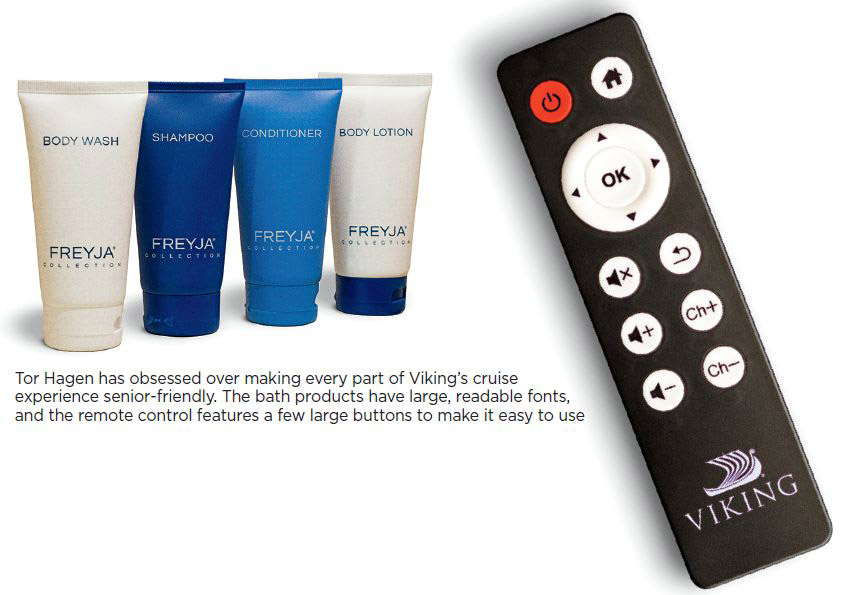
What saved Viking? Hagen’s marketing skills. He flooded the mailboxes of prosperous middle-aged and older Americans with brochures. A river cruise, he told them, is the new way to see Europe, where you only have to unpack once. While many cruise companies were reluctant to do so much direct mail for fear of alienating the travel agents who sold the vast majority of tickets, Hagen forged ahead. He wanted to be able to create demand at a moment’s notice. “We see a hole in booking somewhere and we rifle shoot there,” Hagen says. Since 2000 Viking has spent $1.5 billion on marketing, assembling a database of 37 million households. “Our clients can’t go a week without getting something in the mail from them,” says Harvey Rosenkrantz, a travel agent in San Diego.
In 2012 Viking started running commercials on Downton Abbey. Reliving his ship-stretching days at Royal Viking, he ordered up new vessels that would accommodate 190 people, rather than the usual 164. Loans backed by the German government helped pay for 57 river ships.
“Tor has that Viking blood. He invested heavily in building river cruises—frankly before the market was clear and through periods of cyclical weakness—and created the absolute market leader,” says Paul Hackwell, a partner with TPG, which first invested in Viking in 2016 and owns 11 percent of the company.
Hagen’s view of this: “I love risk. I really do.”
One Saturday in London in 2012, Hagen was having lunch with his friend Manfredi Lefebvre d’Ovidio, the CEO of Silversea Cruises, explaining how he was intent on making a return to ocean voyages. Lefebvre, who was born in Rome, suggested the Italian shipbuilder Fincantieri. Three days later, eight men from the shipyard showed up in Viking’s Basel office. Hagen was short on cash. Fincantieri was desperate for business. Italian taxpayers backstopped the financing, which covered 96 percent of the cost of the ships, at $340 million each.
Fincantieri is now booked for the next seven years. Among its orders: Six more ocean ships from Hagen, with an option for four more. He wants 20 ocean ships before he is done.
Capital is now flooding into the ocean-cruise business. In 2014, Norwegian shelled out $3 billion for Regent and Oceania. In 2015, Genting bought Crystal for $550 million. In 2018, Royal Caribbean signed a deal to buy a two-thirds stake in Silversea Cruises for $1 billion, which CEO Richard Fain heralded as “an answer to a prayer” that addressed “a gap in our portfolio”. Ritz Carlton is also launching a cruise line.
Hagen already has the biggest line at the luxury end of the spectrum, and his fleet is the newest. While all the lines compete on what is included for the price, Hagen has set himself apart. Most high-end lines describe their guests as VIPs who will be pampered and plied with champagne and caviar by white-gloved butlers, but that type of treatment makes Hagen uncomfortable. (He once had a butler pushed on him at London’s upscale Savoy hotel and found the experience extremely awkward.) No, Hagen’s main goal is to make his ships comfortable.
Aboard the Viking Jupiter, he demonstrates how easy it is to identify and open the shampoo and conditioner bottles. He recalls with frustration the Hermès bath products he once came across at a luxe Monte Carlo hotel, which featured illegible gold lettering and were impossible to open without using your teeth. Then he moves into the bedroom and picks up the remote control for the TV, which has just nine jumbo buttons. “This is my design. No teenager is required to operate it,” says Hagen.
Viking’s database is paying off. Two thirds of the passengers on the company’s ocean cruises are previous river cruise passengers. Hagen sees room for 100 riverboats in the Viking fleet. He has two expedition ships under construction, which will likely navigate to remote regions like Vietnam and Antarctica. He has been trying for several years to get his ships on the Mississippi—a nearly century-old law known as the Jones Act requires ships transporting goods or people between US ports to be owned by American citizens—and says he is optimistic it will happen sooner or later. He’s expanding his fleet of European river ships staffed with Mandarin-speaking staff for Chinese tourists.
Hagen plans to be at the helm for a long time, and his daughter is an executive vice president. While he has received acquisition offers (he won’t say from whom), he says he has never been tempted to sell. Can you blame him? He lost a cruise line once. This one is for keeps.
(This story appears in the 05 July, 2019 issue of Forbes India. To visit our Archives, click here.)
Post Your Comment














